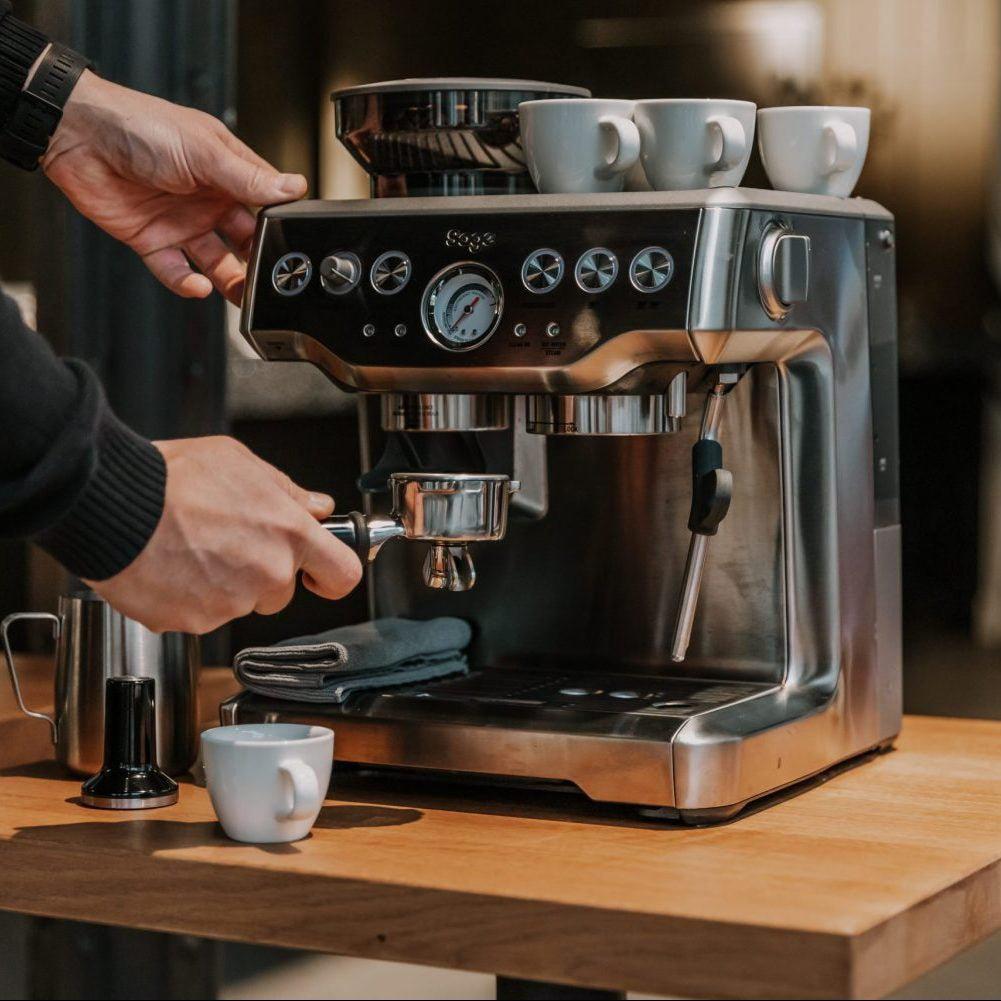As a devoted coffee enthusiast, I've come to understand that creating the perfect espresso requires precision in every aspect. Every component, from grind size to tamping pressure, plays a crucial role. However, one often-overlooked element is the brewing temperature. When I first got my hands on the Breville (also known as Sage in the UK) Barista Express, I was impressed by its customization options. Yet, it wasn't until I learned how to adjust the brew temperature that I truly unlocked the full capabilities of this machine. Uncover the premium brewing capabilities in our Breville Dual Boiler BES920XL review
If you're looking to modify the brewing temperature on your Breville/Sage Barista Express, this guide will take you through each step. Whether you're trying to enhance darker roasts or adapt to altitude differences, tweaking the brew temperature can elevate your espresso to new levels of flavor. Explore the intuitive design and features in our Breville Barista Touch Impress review

Why Brew Temperature Matters
The temperature of your brewing water significantly influences the flavor of your espresso. If the water is too hot, it can lead to over-extraction, resulting in a bitter or burnt taste. Conversely, water that is too cool will cause under-extraction, producing sour or weak flavors. Ideally, espresso brew temperatures range from 195°F to 205°F (90°C to 96°C). Each coffee bean and roast type thrives at a specific temperature. Compare these two top models in our Breville Barista Express Impress vs Pro review
For instance, lighter roasts often perform best at higher temperatures, showcasing their bright and complex notes. In contrast, darker roasts generally fare better at slightly lower temperatures, enhancing their richness without introducing excessive bitterness. Find the right machine for you in our Breville Barista Pro vs Express review
Fortunately, the Breville/Sage Barista Express allows you to adjust the brew temperature, empowering you to create a more personalized coffee experience. Learn the differences between these high-end machines in our Breville Oracle vs Oracle Touch review
Getting to Know Your Breville/Sage Barista Express
The Barista Express is a versatile, semi-automatic espresso machine with numerous advanced features. It comes with a PID (Proportional-Integral-Derivative) controller, ensuring stable temperature throughout the brewing process. While it lacks a visible temperature control knob, there's a hidden setting for adjusting the temperature.
By mastering this feature, you can elevate your espresso-making game without needing any additional tools or devices.
How to Adjust the Brew Temperature: Step-by-Step Guide
Turn Off the Machine
To begin adjusting the settings, start by turning off the Barista Express by pressing the power button. This ensures the machine isn't actively brewing or heating.
Enter Programming Mode
To access the temperature adjustment mode:
Hold down the Program button.
While holding it, press the Power button to turn the machine back on.
Continue holding the Program button until the lights on the control panel begin to flash, indicating you have successfully entered programming mode.
Choose Your Temperature Setting
Once in programming mode, use the following buttons to adjust the temperature:
Single Shot: Lowers the temperature by 2°F (1°C).
Double Shot: Increases the temperature by 2°F (1°C).
Filter Size: Resets to the default temperature of 200°F (93°C).
The LED lights on the control panel indicate the temperature setting:
Both 1 Cup and 2 Cup lights on: Default temperature of 200°F (93°C).
1 Cup light only: Lower temperature at 198°F (92°C).
2 Cup light only: Higher temperature at 202°F (94°C).
Adjust and Fine-Tune the Temperature
Press the Single Shot or Double Shot button to raise or lower the temperature. Each press changes the temperature by 2°F (1°C). Fine-tune the settings to match the type of beans and flavor you want to achieve.
For instance:
Higher temperatures can amplify bright, fruity notes in lighter roasts.
Lower temperatures can emphasize sweetness in darker roasts and minimize bitterness.
Save Your Changes
Once you've selected your preferred temperature, press the Program button again to save your changes and exit programming mode. The machine will briefly power off and restart, applying the new temperature setting.
Test and Refine
Pull an espresso shot and evaluate the flavor and extraction time. If it's not quite right, consider making further adjustments to the temperature or tweaking other variables like grind size or tamping pressure.
It may take a few tries to perfect the balance, but the effort will be worthwhile.
Troubleshooting and Additional Tips
Even with a simple process, you may encounter some challenges. Here are a few common issues and solutions:
Temperature Changes Not Working: Ensure the machine is in programming mode (flashing lights) before attempting to adjust the settings.
Flavor Not Improving: If temperature adjustments aren't delivering the desired result, consider other factors such as grind size, tamping pressure, or the freshness of your coffee beans.
Frequent Adjustments: Adapt the temperature based on the specific beans you use. Lighter roasts generally work better at higher temperatures, while darker roasts thrive at lower settings.

Conclusion
Changing the brew temperature on your Breville/Sage Barista Express can greatly enhance your espresso's quality. With just a few simple adjustments, you can customize your machine to cater to the distinct flavor profiles of various coffee beans, leading to richer and more complex espresso shots.
My journey of experimenting with different temperatures led to remarkable improvements in flavor. If you're still using the default settings, take a leap of faith—experiment with temperature adjustments and experience just how much better your espresso can become.
